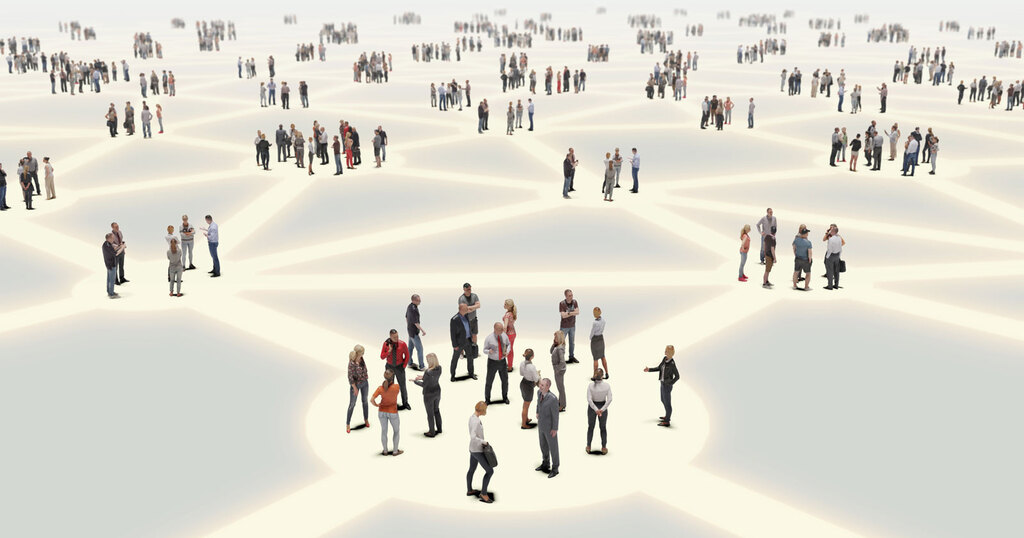Will "Immersive" Transform the Future of Communication? The New Shape of Marketing Focused on "Deepening the Experience"
In today's world, technological advancements have diversified the means of expressing things and ideas. Among these, "immersive" content—particularly VR and the metaverse —that provides users with a sense of immersion is drawing significant attention. As products and services valuing "experiences" gain traction in consumption, incorporating immersive elements into communication and information dissemination—the first points of contact with users—is considered crucial for business strategy.
This time, for those who are constantly exploring their company's marketing/branding strategies, we will explore the ideal form of new communication and its potential under the theme: "Can being mindful of immersive experiences be an opportunity to enhance your brand power?"
The term "immersive," indicating a state of being absorbed in an object or activity
The term "immersive" has become increasingly common lately. It signifies a state of "deep immersion," referring to the very act of being absorbed in content or a space. Everyone has likely experienced "losing track of time" while reading a book or walking through a theme park. That state of being so deeply absorbed in one thing or experience is "immersive."
Lately, it's increasingly discussed alongside terms like "personalization," "automation," "experiential," and "measurability" as a keyword shaping the future of communication. However, it wasn't originally a marketing term; it was used to describe the presentation and experience within entertainment like games, museums, and theaters.
For example, traditional exhibitions typically involve viewing static displays like world-renowned paintings. In contrast, "immersive museums" held in various countries in recent years use digital technology to project and animate works within spaces, or allow visitors to step inside the artwork and realistically experience its world.
Experiential theater productions called "immersive theater" are also popular. A prime example is "Sleep No More," performed in New York. The entire hotel becomes the theater, allowing audiences to freely move between multiple floors and see actors' performances up close. Works pursuing deeper levels of experience, different from sitting in seats to watch, are emerging one after another. These include pieces where audiences stay overnight in the hotel while the performance continues, becoming characters in the story themselves and helping to construct that world.
Beyond this, immersive content exists across a wide range of fields. Here are two specific examples.
Example 1: A Digital Art Facility Utilizing Hundreds of Computers and Projectors
A museum combining a massive digital art space with gardens has gained many fans both domestically and internationally. By using skeletal sensors, pressure sensors, and other technology to detect visitors' movements in real time and change the projected images accordingly, it provides a new experience where the boundary between the body and the artwork's world feels nonexistent.
Example 2: A city experience site utilizing 3D expression
Immersive content isn't limited to artworks. A real estate company's web content allows users to virtually experience a new town under development. By implementing a system enabling web programming within the browser, users can freely navigate the town and view it from all 360° directions based on their mouse movements or finger gestures on a smartphone.
Now, as the value of experience continues to rise, it's time to consciously focus on providing immersive experiences.

Thus, diverse content designed for "immersive" experiences is emerging across various fields, including art and entertainment. Now, let's consider what effects incorporating such immersive elements into communication and information dissemination—including advertising—can bring to the field of marketing.
The era of high economic growth, when material acquisition defined affluence, has passed. Today's world is flooded with mass-produced goods, and needs have diversified. Many people feel overwhelmed by choice, passively consuming by accepting others' evaluations, making it harder to find emotional fulfillment through material possessions.
Amidst this, the "expansion of the experience economy" has become a frequent topic in recent years. The shift from "consumption of things" to "consumption of experiences" is advancing, with more people finding value in the experience itself. The idea that "experience is the source of identity" and the growing desire to "strengthen connections with people and communities to enrich life" were suggested even before the activation of "experience consumption," including VR and AR.
Furthermore, as early as 1998, B.J. Pine II and J.H. Gilmore noted in their book The Experience Economy that "companies should provide customers with memorable experiences, and that the memory itself becomes the product." Simply offering goods as physical products is no longer sufficient value; what kind of experience can be created from them is predicted to become crucial in the future economy.
Indeed, analyzing the consumption trends of the digital native generation reveals their desire to "deepen connections with others through things." Brands and products targeting this generation, who seek experiences beyond the physical object, should increasingly focus on designing experiential value. This generation's consumption trends are explained in detail in this article.
Incorporating immersive elements that allow deep engagement with experiences into advertising designed to drive such consumption behavior is an inevitable trend. Indeed, research suggests that as the level of immersion in advertising increases, so does its persuasive effect.
In recent years, technological advancements have gradually made it easier to uncover "what users want." Through AI analysis, technologies for "personalization"—designing the optimal experience for each individual user—and the "measurability" to gauge its effectiveness have also improved. A conscious effort to provide "the experiences users seek" is now essential in communication design.
Approaches to creating immersive experiences vary. Free thinking is a key move for business improvement.

In the previous chapter, we confirmed that as shifts in consumption trends increase the importance of providing experiential value, it is crucial to consciously incorporate immersive elements into the communication design that mediates this value. So, using immersive as a keyword, what specific marketing and business strategies should be pursued?
Recently, there has been a growing trend of initiatives aiming to enhance customer satisfaction by adding value to the experiences leading up to the purchase of a product or service. For example, one such initiative involves creating immersive experiences aligned with the worldview of a product or brand. This could lead to more strongly communicating differentiation from competitors and leaving a vivid impression of the brand image.Viewing the entire journey—from initial touchpoints like advertising to the actual purchase—as a consistent experience and designing it to allow deep immersion into that world is an indispensable perspective for future business.
One example of a communication strategy enhancing immersion is "in-game advertising." Games inherently offer highly immersive content. What if products from our real world—such as food or daily necessities—appeared on billboards or other scenery within these games?Wouldn't this further blur the line between the game's characters and the player, intensifying immersion? Especially in recent years, with the ability to depict even minute details within games with precision, we can expect further evolution and penetration of this approach.
For experience-focused services like the metaverse, mechanisms and communication that don't disrupt immersion are crucial. In metaverse spaces unconstrained by physical laws, "experiences impossible in reality" can be easily realized.To ensure users perceive they are "acting within the metaverse space" rather than "operating from the real world," improving operability is essential. Additionally, deliberately integrating "realistic elements," much like in-game advertising, could be effective. In this sense, there is significant value in exploring immersive advertising methodologies and communication approaches that enhance, rather than hinder, the metaverse experience.
On the other hand, "immersive communication" isn't necessarily achieved solely through digital technology. For example, physical stores that meticulously express an apparel brand's worldview are one such example.By physically inhabiting a space that tangibly embodies a brand's worldview and accumulated sense of time, customers can become one with the story the brand paints and perceive its appeal more deeply. To achieve this, it is first necessary to articulate the brand image. Then, after minimizing any discrepancies in understanding with the staff responsible for execution, one must proceed with store design and interior selection.
The museum and theater examples mentioned at the beginning are "places that provide immersive experiences themselves." However, in marketing-driven communication, the key lies in how effectively we capture that essence and express the appeal of the product or brand. By using "immersive" as a hint for branding and future business development, the next world we should aim for might come into view a step ahead.
The term "immersive," once primarily used in entertainment industries like art exhibitions and theaters, is now influencing everyday consumer domains. Research suggests that more immersive advertisements carry greater persuasive power. Thus, effectively integrating immersive experiences—whether digital or physical—into communication can boost sales and enhance brand positioning.Considering what the "future of communication" might look like, adapted to this trend, could be quite interesting.
The information published at this time is as follows.
Was this article helpful?